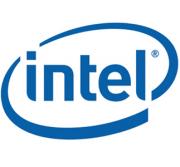|
|
|
|

|
Intel Invokes Phi to Reach Exascale Computing by 2018
Published Jun 18, 2012
|
Intel introduced a high-performance chip family called Xeon Phi, which provides a stepping stone for the company to reach the milestone of creating an exaflop computer by 2018.
A chip code-named Knights Corner will be the first Xeon Phi processor released by Intel later this year. Targeted at supercomputers, Knights Corner will have more than 50 cores and deliver power consumption breakthroughs while scaling performance when conducting complex calculations, said Rajeeb Hazra, vice president of the Intel Architecture Group and general manager of technical computing.
The next big milestone for supercomputers is to reach exaflop performance, which would be about 100 times as fast as today's fastest computers. Chip makers Intel and Nvidia are in a race to claim the lead in exaflop computing by building specialized chips that can execute more calculations per second while keeping power consumption in check. Supercomputers are now harnessing the parallel-processing capabilities of these graphics processors and chips like Phi to perform complex calculations tied to scientific and math research.
The Xeon Phi chips will be part of the Xeon server chip family, which is used in a majority of industry-standard servers to process cloud and database applications. Intel has acquired a host of fabric technologies from companies like Qlogic and Cray to provide the bandwidth to shuttle data in supercomputers.
Phi chips are viewed as Intel's answer to Nvidia's Tesla graphics processors, which pack in hundreds of computing cores and are already being used in the world's fastest supercomputers. The world's second-fastest supercomputer, the Tianhe-1A system at the National Supercomputer Center in Tianjin, China, combines Nvidia's Tesla GPUs with Intel's Xeon CPUs to deliver 2.5 petaflops of performance. Nvidia's graphics processors are also being installed in the Titan supercomputer alongside CPUs from Advanced Micro Devices at the Oak Ridge National Laboratory in Tennessee, which is expected to deliver more than 10 petaflops of peak performance.
Intel calls the first Xeon Phi chip a co-processor, as it needs a server CPU such as the Xeon E5 to work on computer systems. The Phi chip will be used in a supercomputer called Stampede, which could go live as early as the end of this year at the Texas Advanced Computing Center at the University of Texas. The supercomputer will deliver peak performance of 10 petaflops (or 10,000 trillion operations per second). The E5 processors will take on 20 percent of the supercomputer's performance, while Knights Corner will handle 80 percent of the load.
From supercomputers, the Xeon Phi processors could ultimately trickle down to products like workstations that require high-performance chips, Hazra said.
"We continue to see [Xeon Phi] as delivering on that promise in the data center and particularly in HPC," Hazra said. The use of Phi chips could expand to tasks like video processing, and in some cases, rendering for the cloud.
To get to exascale, about 40 to 50 gigaflops of performance-per-watt is needed, and the first Phi chip would deliver roughly four to five gigaflops per watt, said John Hengeveld, director of marketing for high-performance computing at Intel.
The company will continue to deliver Phi chips in the future that will deliver better performance-per-watt with every new generation, Hengeveld said. It took four years to jump from one petaflop to 10 petaflops in the world's fastest supercomputers, but only one year to jump from 10 to 20 petaflops, he said, adding that the power-performance curve will continue to improve.
There's always been the need for a specialized chip for specific applications and Knights Corner is effective, said Jim McGregor, principal analyst at Tirias Research. But whether exascale is achievable by 2018 within a specific power envelop is questionable as the chips are still power hungry.
Exascale computing can ultimately be achieved, but the answer lies in how effectively Intel addresses manufacturing and design issues so chips can deliver the necessary performance per watt, McGregor said.
The first Xeon Phi chip, also called Knights Corner, is made using the 22-nanometer process, which is the same manufacturing technology used to make some of the latest Core laptop and desktop processors. The chip sits in a PCI-Express 2.0 slot and combines vector processing units with standard CPU cores.
Intel has been talking about the Knights Corner chip -- then called the MIC (many integrated cores) chip -- since 2010. The chip came out of Intel's research and development laboratory, and was designed with size, complexity and power consumption in mind.
"They started that with very small dumb cores," McGregor said.
Price and availability for Knights Corner was not announced. Intel's Hengeveld said further details about the chip will be provided last this year.
Posted by
VMD - [Virtual Marketing Department]
|
|
|

